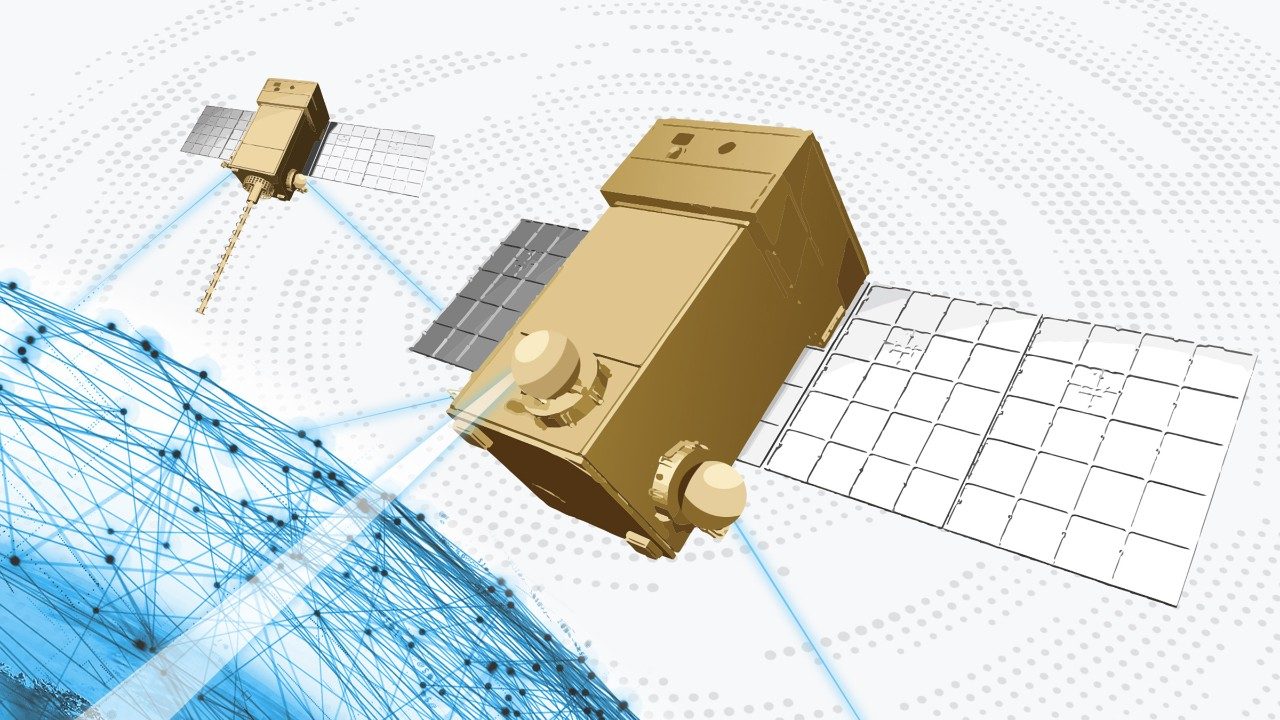The next-generation battlespace requires interoperable solutions that link shooters, sensors and data from all domains — air, land, maritime, space and cyberspace — into one network.
Joint All-Domain Operations (JADO) is the Department of Defense’s name for its concept of modern, technology-driven warfare. JADO is built on connections. At its foundation are resilient networks and systems that collect critical data across multiple domains and then analyze that data to give commanders the information they need to predict, disrupt and overwhelm threats quickly and with new levels of precision.
“With JADO capabilities, warfighters on the edge of battle can receive timely and accurate information in seconds — not hours,” said Doug Graham, vice president of Advanced Programs at Lockheed Martin. “Lockheed Martin is driving the move to the next-generation battlespace by building JADO-enabling systems that are ready for operational use today and by designing new solutions that will plug and play into the JADO kill web in the future.”
Building the foundation with common architecture and practices
We're using Modular Open Systems Architectures, or MOSA, to allow different domains and legacy systems that were not originally designed to work together to connect. Agile DevSecOps allows the development of common reference architectures to support a suite of common mission services, connectivity and interfaces that are compliant with existing government requirements.
“Artificial intelligence, machine learning, autonomy and data analytics are changing the speed of warfare — and our nations’ adversaries are increasingly using these tools in attempt to gain advantages,” said Graham. “We are keeping pace by building AI, autonomy technology, and data visualization solutions that will keep people in control while enabling them to focus on higher-level tasks and make fast, effective decisions.”

Enabling small satellites with mesh networking
We're also making progress toward creating the type of the resilient communications grid that JADO-enabled systems will require. The Pony Express small satellite helped demonstrate the utility of mesh networking — linking satellites to other satellites or terrestrial systems like planes, ships and vehicles.
The Space Transport Layer Tranche 0 for the Space Development Agency (SDA) is another mesh network. We're building 10 of the first 20 small satellites that will use optical cross-links to communicate with each other, link to other commercial and government constellations, and introduces Link-16 network communications with terrestrial systems — like F-22 fighter aircraft and PAC-3 missile defense systems — to provide increased situational awareness for tactical land and maritime warfighters.

Adding 24/7/365 defense to JADO with NGI
At Lockheed Martin, we're also developing and demonstrating JADO-enabling systems ready for operational use today — putting the best capabilities into our warfighter’s hands with the reliability, speed and dedication that we're known for. Those same advantages built into today’s tools are advancing the defense systems that will be key components of JADO tomorrow, including the Missile Defense Agency’s Next Generation Interceptor (NGI).
NGI’s mission is to protect the homeland against missile threats from rogue nations with a modern, never-fail weapon system as an evolution of the currently deployed Ground-Based Midcourse Defense (GMD) system.
We're designing an interceptor that will embrace the interoperability needed in the 21st-century battlespace with features such as multiple kill vehicle technology, digital engineering, DevSecOps and modular architectures. It will also be designed from the ground up as an all-up-round to address all elements of environmental survivability from day one, using the knowledge we've gained from decades of spacecraft that can withstand the harsh environment of space.
NGI is designed to “plug and play” with the Space Force’s network of missile warning satellites and sensors, realizing the goal of JADO is to provide 24/7/365 defense against missile threats. A MOSA will provide the interconnectivity needed to work with other elements of the kill web as well as ease of updating depending on mission needs.
“We understand the next generation of warfare demands agility, and Lockheed Martin has demonstrated we are using the tools to rapidly innovate future systems like NGI,” said Sarah Reeves, vice president of Missile Defense Programs at Lockheed Martin. “Our commitment to the MDA for NGI is to deliver a robust, enduring, evolving and upgradable weapon system to defend the homeland by 2028.”




